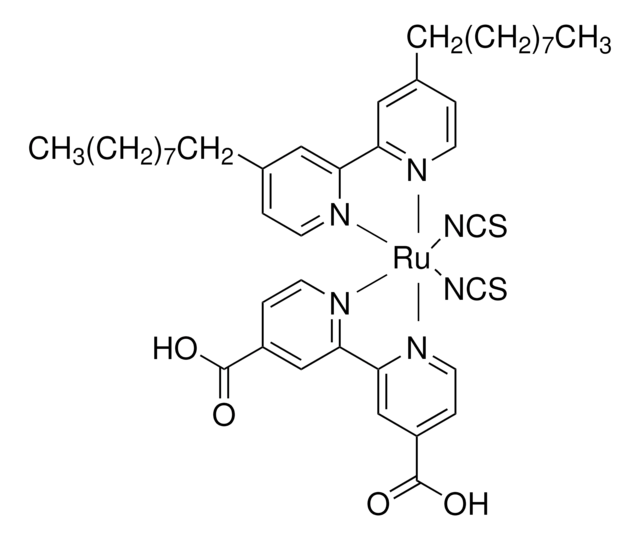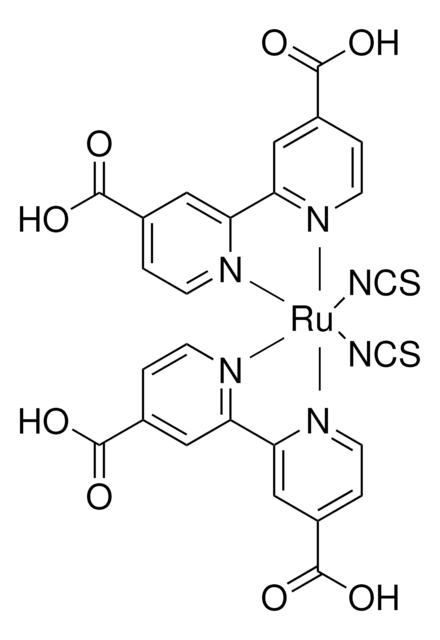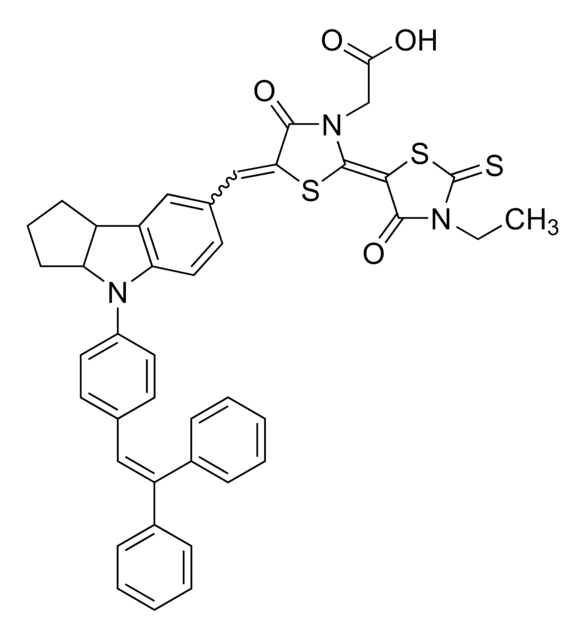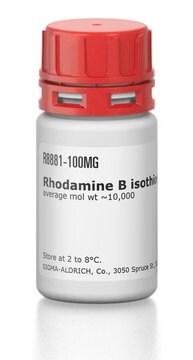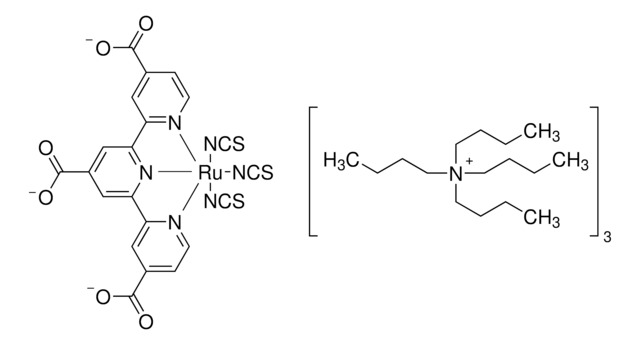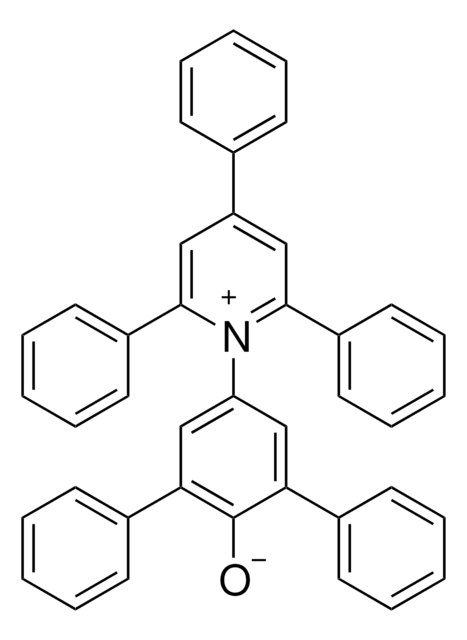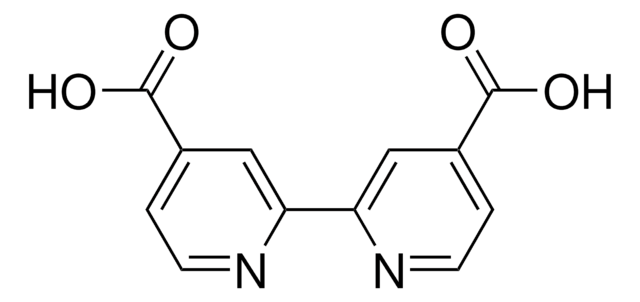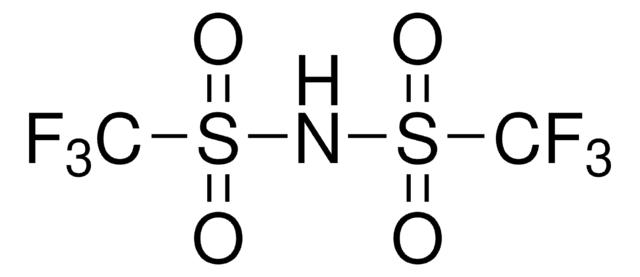791415
K19 Dye
85% (HPLC)
Synonyme(s) :
Greatcell Solar®, K 19 sensitizer, Ru(4,4-dicarboxylic acid-2,2′-bipyridine)(4,4′-bis(p-hexyloxystyryl)-2,2-bipyridine)(NCS)2
About This Item
Produits recommandés
Essai
85% (HPLC)
Forme
powder (black)
Pf
>300 °C
λmax
536, 357, 311 nm at 0.02 mM in DMF (lit.)
Chaîne SMILES
OC(C1=CC(C2=CC(C(O)=O)=CC=N2)=NC=C1)=O.S=C=N[Ru]N=C=S.CCCCCCOC(C=C3)=CC=C3/C=C/C4=CC=NC(C5=NC=CC(/C=C/C6=CC=C(OCCCCCC)C=C6)=C5)=C4
InChI
1S/C38H44N2O2.C12H8N2O4.2CNS.Ru/c1-3-5-7-9-27-41-35-19-15-31(16-20-35)11-13-33-23-25-39-37(29-33)38-30-34(24-26-40-38)14-12-32-17-21-36(22-18-32)42-28-10-8-6-4-2;15-11(16)7-1-3-13-9(5-7)10-6-8(12(17)18)2-4-14-10;2*2-1-3;/h11-26,29-30H,3-10,27-28H2,1-2H3;1-6H,(H,15,16)(H,17,18);;;/q;;2*-1;+2/b13-11+,14-12+;;;;
Clé InChI
HBARXZGSEMEPLK-BPSJQPAOSA-N
Description générale
Application
Informations légales
Greatcell Solar is a registered trademark of Greatcell Solar Materials Pty Ltd.
Mention d'avertissement
Warning
Mentions de danger
Conseils de prudence
Classification des risques
Eye Irrit. 2 - Skin Irrit. 2 - Skin Sens. 1 - STOT SE 3
Organes cibles
Respiratory system
Code de la classe de stockage
11 - Combustible Solids
Classe de danger pour l'eau (WGK)
WGK 3
Point d'éclair (°F)
Not applicable
Point d'éclair (°C)
Not applicable
Faites votre choix parmi les versions les plus récentes :
Certificats d'analyse (COA)
Vous ne trouvez pas la bonne version ?
Si vous avez besoin d'une version particulière, vous pouvez rechercher un certificat spécifique par le numéro de lot.
Déjà en possession de ce produit ?
Retrouvez la documentation relative aux produits que vous avez récemment achetés dans la Bibliothèque de documents.
Les clients ont également consulté
Articles
Dye-sensitized solar cells (DSCs) are 3rd generation solar cells combining the promise of high efficiency with low production costs.
While dye sensitization as the basis for color photography has been accepted for a very long time,1 attempts to use this principle for the conversion of solar light to electricity generally had resulted only in very low photocurrents, below 100 nA/cm2.2
Notre équipe de scientifiques dispose d'une expérience dans tous les secteurs de la recherche, notamment en sciences de la vie, science des matériaux, synthèse chimique, chromatographie, analyse et dans de nombreux autres domaines..
Contacter notre Service technique